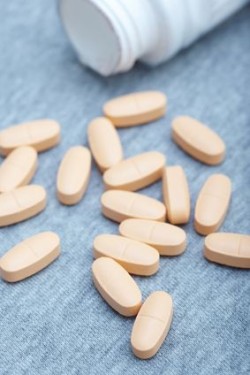 Stevens Johnson Syndrome is a serious and potentially life-threatening skin disease. The most common cause of Stevens Johnson Syndrome (SJS) and Toxic Epidermal Necrolysis (TEN) is through an allergic drug reaction. SJS and TEN have been known to occur after exposure to fluoroquinolone or quinolone antibiotics.
Stevens Johnson Syndrome is a serious and potentially life-threatening skin disease. The most common cause of Stevens Johnson Syndrome (SJS) and Toxic Epidermal Necrolysis (TEN) is through an allergic drug reaction. SJS and TEN have been known to occur after exposure to fluoroquinolone or quinolone antibiotics.
What are Quinolones?
Fluoroquinolones or quinolones are some of the the most widely prescribed antibiotics in the United States, with the most commonly requested medications being Cipro (ciprofloxacin), Levaquin, or Avelox. Despite their popularity, quinolones have been linked to serious and life-threatening side effects like SJS.
Stevens Johnson Syndrome and Toxic Epidermal Necrolysis
Stevens Johnson Syndrome (SJS) and Toxic Epidermal Necrolysis (TEN) are life-threatening skin conditions that have been associated with quinolones. Quinolone SJS and TEN can start with mild non-specific symptoms such as fever, malaise, chills, aching muscles, headache, sore throat or stinging eyes. A patient with SJS eventually develops blistering of the mucous membranes, typically in the mouth, eyes, and genital areas, and patchy areas of SJS rashes. With TEN, which is a more severe form of SJS, there is similar blistering of mucous membranes; however, in addition to blistering, the entire epidermis can peel off in sheets from large areas of the body.
The mortality rate for persons suffering with Stevens Johnson Syndrome is between 25-80 percent. Some of the factors that determine a person’s likelihood of survival include the severity of the disorder and the amount of skin that the victim loses. If a person with SJS has lesions that are exposed and become infected, they have a much higher chance of death.
To save the life of a person with quinolone SJS or TEN, treatments usually include intravenous immunoglobulin (IVIG), pain medication, and in the most severe cases, skin grafts. Because SJS and TEN are so dangerous, quinolone users must be aware of the SJS side effects so that medical attention can be given should they present with SJS symptoms.
A significant number of patients who report suffering Stevens Johnson Syndrome (SJS) and Toxic Epidermal Necrolysis (TEN) often require hospitalization to prevent the conditions from worsening. As of now, doctors are unsure as to what causes certain patients to suffer SJS or TEN, but theorize it has to do with the patient’s immune system or metabolic process and how these react to quinolone antibiotics.
Do YOU have a legal claim? Fill out the form on this page now for a free, immediate, and confidential case evaluation. The attorneys who work with Top Class Actions will contact you if you qualify to let you know if an individual lawsuit or class action lawsuit is best for you. [In general, quinolone lawsuits are filed individually by each plaintiff and are not class actions.] Hurry — statutes of limitations may apply.
ATTORNEY ADVERTISING
Top Class Actions is a Proud Member of the American Bar Association
LEGAL INFORMATION IS NOT LEGAL ADVICE
Top Class Actions Legal Statement
©2008 – 2025 Top Class Actions® LLC
Various Trademarks held by their respective owners
This website is not intended for viewing or usage by European Union citizens.
Get Help – It’s Free
Join a Free Quinolone Class Action Lawsuit Investigation
If you or someone you know took Cipro, Levaquin, Avelox or another quinolone antibiotic and were diagnosed with liver failure, Stevens Johnson Syndrome (SJS) or toxic epidermal necrolysis (TEN), you may have a legal claim. See if you qualify by submitting your information below for a free and confidential case review.
An attorney will contact you if you qualify to discuss the details of your potential case at no charge to you.
Oops! We could not locate your form.












